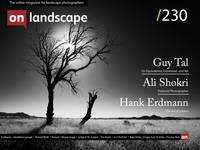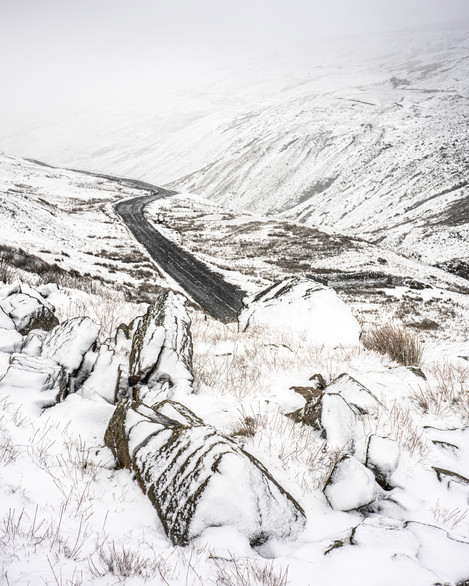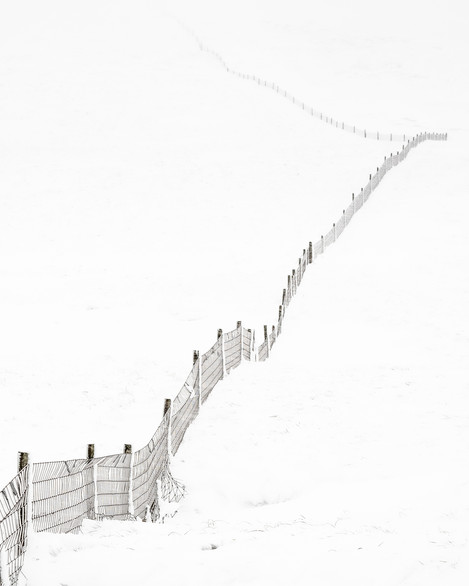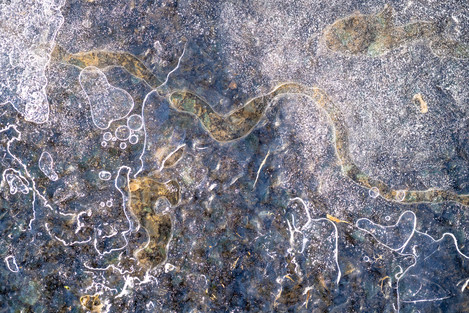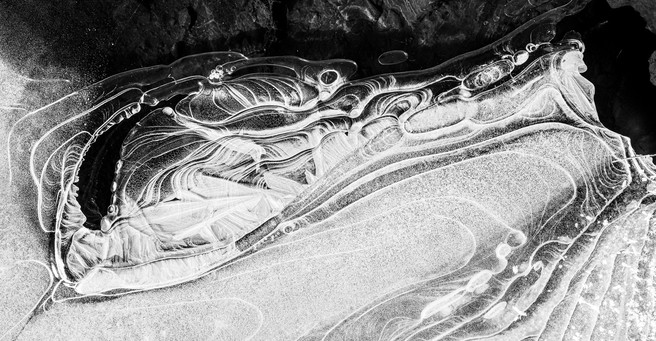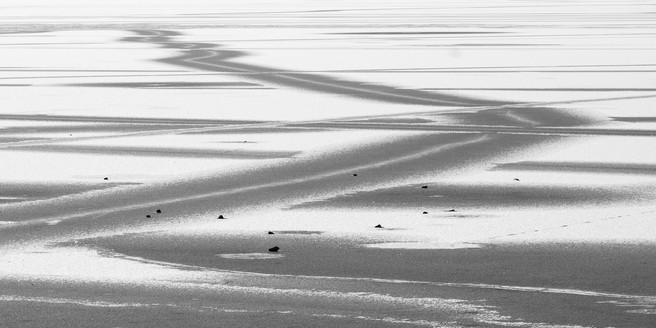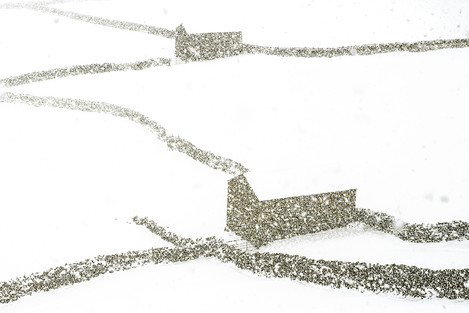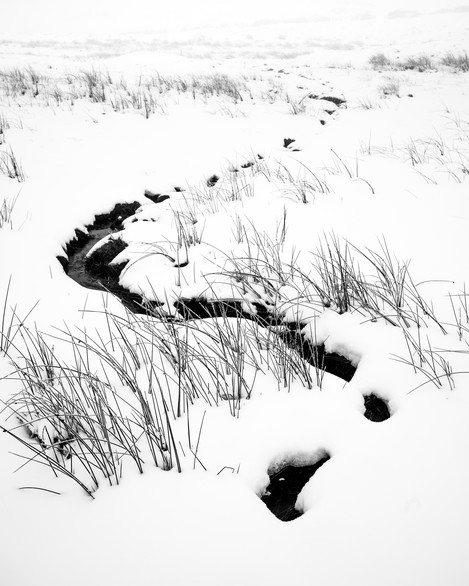The ability to turn the ordinary into something extraordinary

Richard Walls
Richard is a British landscape photographer living and working in the Yorkshire Dales National Park. With his wife, Polly, Richard owns and runs The Old School Muker Art Gallery & Craft Centre situated in the village of Muker, set within the stunning surroundings of Upper Swaledale. Richard is also Muker's foremost bongo player.
I begin to look forward to the next winter almost before the last one is done. Spring, summer and autumn all bring their own attractions and I embrace each one in turn, but as I roam the Upper Dales, camera in hand, deep down there’s a yearning for winter’s return and whatever subject is framed by my viewfinder I can’t help but wonder how it would look blanketed in snow. As October fades and the in-between days of November slowly pass, my childlike excitement grows. I suspect I’m not alone!
This year the first heavy snow fell in the Upper Dales on 3rd December. Eight inches of snow on Buttertubs Pass and an uncontrolled slide down a steep section of road was enough to prevent a half-hearted attempt to reach the gallery in Muker. Instead we dug out the snow, gritted behind the tyres, reversed back up the slope, turned the car around and drove back home. A cup of tea later, warm outdoor gear on, we were trudging up Beggarmans Road towards Fleet Moss into the snow and the mist.
The Upper Dales, where we live and work, lie in the far north west of the Yorkshire Dales, bordered by Cumbria to the west and County Durham to the North. The region encompasses the upper reaches of Wensleydale, its northerly neighbour Swaledale, and a number of side dales including Sleddale where we live.
Fell top or frost pocket it’s the transformational power of winter that I’m excited by; its ability to turn the ordinary - a wall, a fence, a stream - into something extraordinary; to throw forward something otherwise overlooked; to reveal structures usually hidden by chaos and complexity; to create shapes and patterns that exist for a moment or at most a few hours.
Upper Swaledale, with its deep, narrow valley walled in by high fells has no shortage of such places. If you prefer the tops, follow the River Swale upstream towards Keld, Birkdale Common (474m) and the Cumbrian border. Alternatively make the short, stiff climb from Muker to the top of Kisdon Hill (499m) or take Buttertubs Pass out of Swaledale and (snow plough permitting) you’ll soon be on the high ground (528m) between Great Shunner Fell (716m) and Lovely Seat (675m). If you prefer the bottoms, seek out the many waterfalls, becks, hollows and meadows that surround Kisdon, including Kisdon Force and the wonderfully named Dirty Piece.
Wensleydale, wider and gentler in nature, holds its own delights. There are the fells of Addlebrough (481m), Dodd Fell (668m) and Wether Fell (614m) to explore. At the top of Fleet Moss (602m) you’ll discover the old roman supply route of Cam High Road. Take the western course towards Dodd Fell, with wonderful views of Ingleborough, to join the Pennine Way. Take the eastern course and you’ll cross the length of Wether Fell and have the option to drop north into Wensleydale or south into Raydale, home to North Yorkshire’s second largest lake, Semerwater, and England’s shortest river, The River Bain.
Of course winter’s transformational power isn’t limited to rural idylls. Wherever temperatures plummet and snowfalls, whether it’s a city centre, a suburb, an industrial park or housing estate, if you have the time and inclination (and are happy to put up with the odd funny look from the passers-by) there’s the opportunity to discover something new.
Wherever I am there’s a mindfulness about working in these conditions that goes to the heart of my fulfilment and joy of being a photographer. Though I might set out with a particular subject in mind there comes a time (usually when my pre-visualisation comes face to face with stark reality) when the baggage of preconceived ideas is discarded. It’s then that the landscape becomes a blank canvas and I begin to look with fresh eyes, both at the grandeur of the place and its minutiae. Moorland streams, usually unnoticed, take the guise of snakes, upturned feeding troughs become space invaders, rough moorland becomes sand dunes, roads become lightning strikes, riverbanks ice realms. These are the times I become lost in the moment only to discover afterwards that I’ve spent an hour photographing a sheet of ice, or wire fence, or dry stone wall! It might take a while to tune in to the landscape; on some days you might not tune in at all, but with patience, the discovery of one thing usually triggers the discovery of another, and then another.
When out in wintery conditions the key (for me at least) is simplicity. I don’t want to be changing lenses or filters when the wind is whipping up a snowstorm, nor if I can help it having to set up a tripod. Though camera kit is secondary to the ability to look, the right gear is important. A decent view finder, low noise at higher ISO’s and a good dynamic range are all a help, and if like me you favour the simplicity of a fixed focal length lens (in my case 35mm) lots of megapixels will allow you to crop down afterwards.
I can’t claim that photographing winter’s transformation of the landscape will provide any deep and significant meaning or deliver any sort of message (though with time messages and meaning have a habit of revealing themselves). Instead, it will more likely make you cold and wet, and wishing you had a weather sealed camera! But for me, photography concerns aesthetics, discovery and simple fascination, and is first and foremost a means to record and share a new discovery or the moment I’ve just witnessed, so winter’s ability to shape something new is pure alchemy. To watch melt water flow beneath ice, with its random patterns and endless pathways, may not provide an insight into the human condition, but to my mind is beautiful and fascinating and that’s quite enough!
- Buttertubs Pass, Swaledale
- Moorland Fence, Buttertubs
- Pathways, Sleddale
- Sidewinder, Fleet Moss, Sleddale
- Gunnerside, Swaledale
- Dragonfly, River Bain, Raydale
- Fragile World, River Bain, Raydale
- Semmerwater, Raydale

